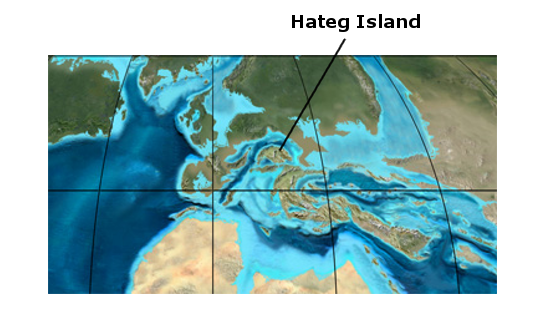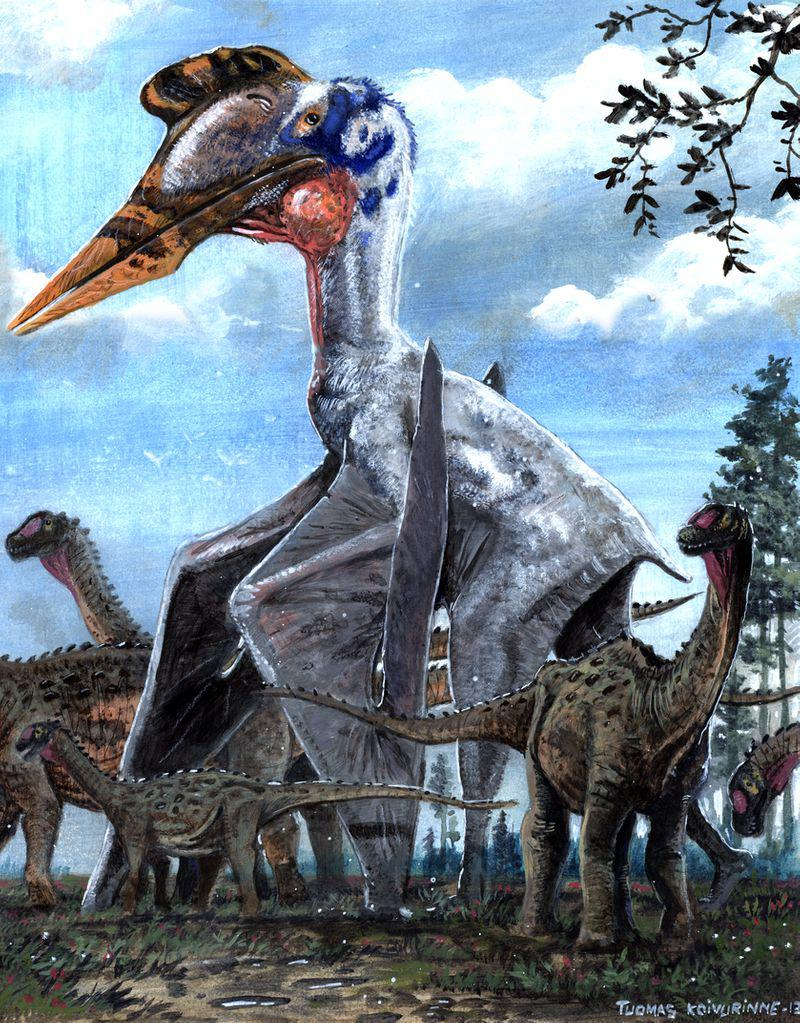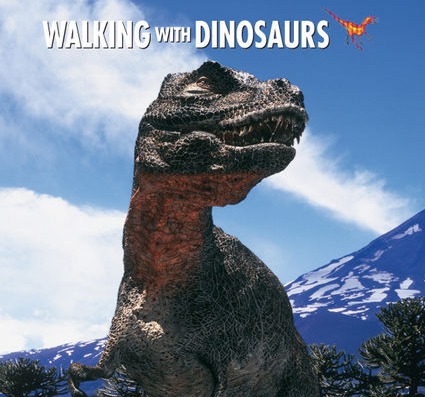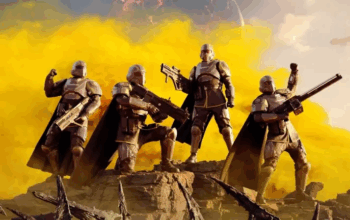Part 1: The Elevator Pitch
It’s been over 20 years now since the BBC debuted the legendary miniseries: Walking with Dinosaurs. Since then our knowledge of these magnificent creatures has grown exponentially to the point where the science in the series can be considered dated. Nevertheless, Walking with Dinosaurs [WWD] and its spinoffs have helped to spawn a new generation of dinosaur lovers such as myself. We are now living in a golden age of dinosaur discovery with more species having been identified and studied in the past decade alone than the entire past century. With the BBC launching sequels to their previous award-winning documentaries such as Blue Planet and Planet Earth (now more directly addressing current climate change shifts and human interference) it is now time for them to make a new series based on our updated scientific knowledge.
The main appeal of WWD is that rather than being shot like other education programs – constantly cutting to interviews with experts – it was filmed like an animal documentary. Rather than depicting the dinosaurs as bloodthirsty monsters, they show them as animals living their everyday lives in their natural environment. Many of the episodes follow only a single dinosaur as the main protagonist as we explore the rest of the world in their eyes.
The series was shot on location mostly in Australia, New Zealand, Chile, and New Caledonia, because these were the closest environments to which dinosaurs have lived in. The CGI was provided by Framestore Studios which was at the time a fledgling effects company. Consulting various paleontologists one what the dinosaurs would have looked like, the total CGI work that had to be done took nearly 2 years. The time and dedication to create this series made it one of the most expensive documentaries at the time.
Thanks to the success of Jurassic Park in 1993 it suddenly is possible to create dinosaurs that are realistic and lifelike. This was done using a combination of CGI and Practical effects. These New filming techniques would be repeated throughout the 1990’s numerous action and monster films and it continues on to this day. Now after 20 years our knowledge of dinosaurs has only increased as does the CGI making techniques becoming more advanced. Now would be a great time to remake the miniseries based on the knowledge we have now.
One big factor that needs to be addressed is the technology that would be used for this Remake. If the BBC were to team up with a major film studio like ILM or Disney there is an opportunity to use new technology that’s being tested with other movies.
I would still recommend practical effects for close shots with the dinosaurs However with advances in CG there are more opportunities for more locations and environments that don’t exist today. More recent films that could serve as a further testing ground were some of the Disney’s remakes of The Jungle Book and The Lion King. Despite the mixed review the one thing both critics and audiences have given praise was Jon Favreau’s use of virtual sets to bring both the animals and the environment in almost photorealistic light.
There are also a number of independent animators that also have increasing recognition online. Here is a clip from Youtuber Julian Johnson-Mortimer his 3 minutes segments of just showing the everyday moments of dinosaurs (Spinosaurus in particular) is amazing to look at And he had virtually no budget. It would be fantastic if the BBC hired these content creators.
Part 2: Episode Structure
Now to address the structure and core content of our proposed miniseries update. Firstly, instead of 6 x 22-min episodes like the original show, this time it would feature 8 x 1-hour long episodes providing an opportunity to explore new locations and time periods that the previous series didn’t touch. This is also an opportunity to re-contextualize some of the dinosaurs shown in the previous series giving them a more updated appearance.
Episode 1: New Blood – Triassic Ancestors
Like the first series episode one will focus on the First dinosaur, ever that has existed. Dinosaurs were still a rare species but they were surrounded by other giant mammals like reptiles that dominated Pangea for millions of years like the Dicynodonts. They were also giant crocodile-like reptiles that came from the dinosaurs’ same ancestors like Postosuchus (this time with the correct posture).
The difference between this episode and the original pilot is there is more focus one How the climate is shifting to an environment that favors small bodied bipedal creatures. This would be a mass extinction event that Has given rise to the dinosaurs, but also foreshadowed their own decline in the earth’s cycle.
Given that all the continents are connected there are opportunities to Showcase other Big reptiles even if their fossils were found in separate locations. That was recently discovered such as Lisowicia, a Dicynodont species the size of an elephant.
All of these big and bizarre creatures and yet the only dinosaur we focus on is Eorapter, one of the oldest dinosaur fossils ever discovered.
Episode 2: Origins – Early Jurassic Arizona
Dinosaurs may have evolved in the Triassic period, but this episode takes place at the start of the Jurassic period when Pangea was beginning to split into 2 continents. Dinosaurs are still primitive but they begin to diverge from their ancestors from the previous episodes. Dinosaurs like Proceratosaurus and Dilophosaurus Are the creatures that would evolve into the theropods and sauropods that we become more familiar with.
Episode 3: Land of Giants – Late Jurassic China
We finally enter the age of giant sauropods. This time instead of being in familiar Colorado like in the previous series, this will be set in China. This is where the dinosaurs start to become more diversified, and just generally larger. There were several different species of stegosaurus like Chungkingosaurus, many of them have large spikes instead of plats. As for the Sauropods the ones featured is the Mamenchisaurus, a species worth exploring as it had an incredibly long neck even for their kind, nearly half the length of its body.
But amongst them all is the “crested dragon” Guanlong, one of the earliest ancestors of the famous T-Rex.
Episode 4: Early Cretaceous England
The reason I chose England was for a few reasons – the first was this was where the previous series that the Pterosaur Onrithocarius flew in (their) fourth episode. This time this will feature some of the dinosaurs in their more accurate form.
For example, the large raptors (falsely named Utahraptors) now have feathers that cover all of their bodies. It is also now being debated as to whether or not raptors hunted in packs, but for the sake of creative liberties I will keep the pack mentality.
Since Iguanodon was among the first dinosaurs to be described it makes sense that they would be the focus One crucial difference is that Iguanodons had much more beefy arms then their early depictions. Despite them looking like moving meatsakes they have large thumb picks that can do great damage to any predator that confronts them.
Another reason that I chose England was that this was the Area where dinosaurs were first discovered. Back then the continent of Europe was a chain of Islands with multiple different species. roaming this would also introduce other dinosaurs like the fish eating Baryonyx, and the bizarre Concavinator.
Episode 5: Hațeg Island Romania – Mini dinosaurs; Giant pterosaurs

Just like the original series, this one goes to a region that is seldom thought about. The Hateg region of what would one day become Romania was an island around 100-70 m.y.a. This region was unique because this Island exhibited miniature dinosaurs.

For example, Magurasaurus was a sauropod that grew no bigger than a cow. This was caused by a phenomenon known as “insular dwarfism” where a large bodied species becomes marooned on an Island either by a landbridge or by continental drift. This has been repeated throughout history with elephants and even buffalo today.
However, not all the island’s inhabitants were tiny – sometimes predators with less competition increase in size. The main terror of the island is not a theropod or even a raptor; but instead a giant pterosaur nearly 10 feet tall. Its wings are so small compared to its head that there is debate as to whether these late pterosaurs could fly. The previous Series focused on locations that we normally don’t think about like Antarctica, this is essentially our Antarctica episode.
Episode 6: Sailing the Swamps
There was no way I’m doing this article and not to mention one of the most bizarre dinosaurs that ever lived. As recently as 2020, Spinoasurus has been through many revisions. The latest among them is now believed to have a tail fluke like that of an eel, confirming once and for all(?) it was an aquatic predator – a far cry from the T-rex killer in Jurassic Park. This is also an opportunity to explore what prehistoric northern Africa was like, as it was not covered in the original series. Far from being the largest desert in the world, Africa was a maze of swamps and estuaries.
This was also a variety of land animals too including Ouranosaurus – an Iguanodon relative with a sail on it’s back (convergent evolution) land of predatory dinosaurs including Carcharodontosaurus, who was a T-Rex sized predator that was certainly the top predator on land that specialized in eating Sauropods.
Episode 7: Late Cretaceous American Interior Seaway/Coastline
Just like the original series, there will be an episode that will delve into the giant sea reptiles. The difference is that this will focus on the seaways and estuaries of what is now Texas. During this time North America was split into two continents with much of middle America being underwater. We would follow Mosasaurs, the long necked Plesiosaur known as Elasmosaurus, and the Archelon sea turtles the size of cars. Mosasaurs are whom I’m particularly interested explore as we now believe to poses a kind of tail-fluke similar to those that evolved on other marine creatures such as dolphins and whales.
Swimming further inland following the estuaries we follow Giant crocodiles the length of a Bus and Smaller T-Rex ancestors such as Albertosaurus on one landmass and Appalachiosaurus on the other.
Episode 8: Alaska… after asteroid impact….
This will be a different kind of episode as it focuses mainly on the asteroid impact turning this finale into a survival film. The first 15 minutes shows ordinary life on the planet, unlike the original series where it looks like dinosaurs were on their last legs before the comet they were actually thriving quite well before the impact. T-Rex would certainly be featured (after all, I just spent several episodes depicting it’s ancestors). However, he’s only in the first 15 min and is obliterated; the real protagonist of the whole episode is extinction itself.
That said it is important to address the importance of getting the T-rex design correctly. Despite this documentary having some creative liberties it is imperative to get some of the creature designs as accurate as possible. The original series T-rex was heavily criticised for having a very short neck, tail and even the head are way out of proportion.
Today it is still heavily debated as to whether or not T-Rex had feathers. Recent studies have shown that the Rex’s skin does possess scaly skin that is comparable to that of a tortoise skin. It’s body proportions are also coming under scrutiny as well. Because of its front body mass there is evidence that their frontal mass has been closer to the ground than expected. An additional feature to add is that T-Rex is believed to have upper lips to protect their teeth from the elements, it’s a minor detail but it’s something that other depictions don’t show.
The middle covers the following 3 days of the impact based on the latest scientific information we know. The remaining dinosaurs struggled to maintain an existence as the asteroid wouldn’t have wiped out all existence at once; it was a process that took years. The dinosaurs that would have lasted the longest were the Troodons as they were believed to be among the most intelligent and subsist mostly on small game. Eventually we cut to a few million years later we see plants growing again, mammals begin to grow larger and like the last show the birds that have evolved ending on the optimistic note that the dinosaur’s descendants are still alive today.
The reason I have chosen the arctic circle is because The last of the dinosaurs were believed to have resided there as it wasn’t as affected by the blast as in other places. I also wanted to subvert the expectations as I’ve been building up T-Rex’s ancestry for several episodes. I want to give T-Rex a glimpse of power, having it triumph over a Triceratops, only for the asteroid to hit.
Conclusion
Given that scale for this project it will be a massive undertaking. Despite our CGI and scientific advancements it will still cost a studio’s worth of $$money$$.
It is possible that not all of these episodes could be made, in which case I’m willing to cut the Iguanodon and Spinosaurus episodes. Whenever a remake comes it is important to do two things: 1) expand on the original and 2) give something new. The BBC has done this a lot recently with their remakes such as Planet Earth and Blue Planet with new environments and animals the previous series didn’t trend on such as climate change and urban encroachment. It is my hope that one day a studio or major streaming service like Netflix, or the BBC will remake this groundbreaking show following the guidelines I have laid down.






Mavzuga oid maqolalar tendentsiyalari va izlanishlari:ozbekcha